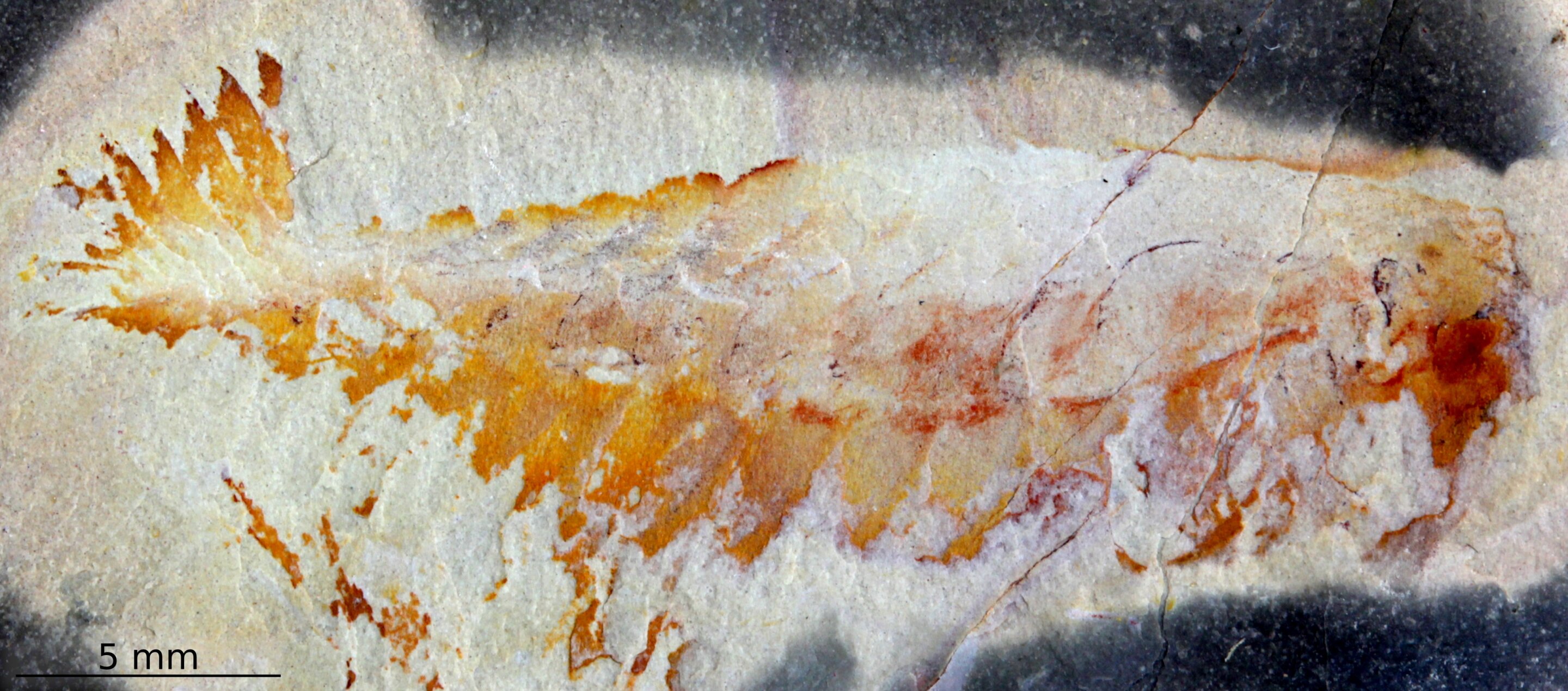The 'weirdest wonder' of evolution had an even weirder cousin, new study finds
Looks like Opabinia wasn't just a lonely freak of nature, after all.

With five eyes, a backward-facing mouth, and a long, claw-tipped trunk where its nose should be, Opabinia regalis is one of the strangest-looking celebrities of the Cambrian period. In fact, this ancient sea-dweller is so unique that scientists have never discovered another species in the fossil record that appears to fit into its alien-faced family.
That is, until now.
Meet Utaurora comosa — a small, spiky-tailed marine animal that lived a few million years after Opabinia in what is now North America. First described in 2008, U. comosa was originally classified as a relative of the fearsome Anomalocaris, a claw-faced apex predator that terrorized the Cambrian seas. But a new study suggests that U. comosa may have been much more than just another ancient predator.
Related: Why do Cambrian creatures look so weird?
In a paper published Feb. 9 in the journal Proceedings of the Royal Society B, researchers reexamined the only known U. comosa fossil, comparing it with more than 50 living and extinct animal specimens. The team concluded that U. comosa is almost certainly a relative of Opabinia — and not a relative of Anomalocaris — making U. comosa only the second member of Opabinia's family ever discovered and the first one found in more than 100 years.
"The weirdest wonder of the Cambrian no longer stands alone," the researchers wrote in their paper.
Terror of the seas?
From 541 million to 485 million years ago, Earth's seas bloomed with biodiversity for the first time. This era, sometimes called the Cambrian explosion, was when the relatives of all major animal groups alive today first appeared in the water. The Cambrian explosion also gave rise to the world's first truly fearsome apex predators.
Get the world’s most fascinating discoveries delivered straight to your inbox.
Those carnivorous killers are known as the radiodonts — a reference to the circular-saw-shaped mouths on the undersides of their heads. Many of them — including the infamous Anomalocaris — also had grasping, claw-like appendages on the fronts of their heads, likely for snatching unsuspecting prey and delivering it to their hungry mouths.
The only known fossil of U. comosa — discovered in Utah's Cambrian Wheeler Formation — had no such appendages on its head. Meanwhile, its inch-long body was segmented into 14 or 15 furrows, each tipped with a pointy flap, much like Opabinia. Despite these details, the U. comosa fossil was classified as a radiodont in 2008.
That didn't sit right with paleontologist Stephen Pates, a former Harvard graduate student and lead author of the new study. So, in their new paper, Pates and his colleagues reexamined the U. comosa fossil, comparing 125 of the fossil's traits with more than 50 groups of living and extinct arthropods, which is the largest phylum in the animal kingdom and includes all insects, crustaceans and arachnids.
The team's analysis showed that almost none of U. comosa's traits fit in with the radiodont family; rather, the fossil creature was almost certainly related to Opabinia.
"This means Opabinia was not the only opabiniid," Pates said in a statement. "Opabinia was not as unique a species as we thought."
These findings are exciting for a few reasons, not the least of which is that Opabinia can now invite at least one other species to its family reunions.
In a broader sense, the existence of another opabiniid shows that this wasn't just a family of weirdos but that both creatures were "part of a bigger picture" of Cambrian evolution, Pates told The New York Times. With their backward-facing mouths and furrowed bodies that appear almost segmented, Opabinia and U. comosa seem to be clear predecessors of modern arthropods, many of which possess these same traits, Pates added.
Originally published on Live Science.

Brandon is the space / physics editor at Live Science. With more than 20 years of editorial experience, his writing has appeared in The Washington Post, Reader's Digest, CBS.com, the Richard Dawkins Foundation website and other outlets. He holds a bachelor's degree in creative writing from the University of Arizona, with minors in journalism and media arts. His interests include black holes, asteroids and comets, and the search for extraterrestrial life.



